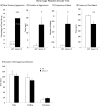GluA3-deficiency in mice is associated with increased social and aggressive behavior and elevated dopamine in striatum
- PMID: 22285418
- PMCID: PMC4096766
- DOI: 10.1016/j.bbr.2012.01.007
GluA3-deficiency in mice is associated with increased social and aggressive behavior and elevated dopamine in striatum
Abstract
Glutamate signaling has been implicated in the regulation of social behavior. AMPA-glutamate receptors are assembled from four subunits (GluA1-4) of mainly GluA1/2 and GluA2/3 tetramers that form ion channels of distinct functional properties. Mice lacking GluA1 showed a reduced anxiety and male aggression. To understand the role of GluA3 in modulating social behavior, we investigated GluA3-deficient mice (Gria3-/Y) on C57BL/6J background. Compared to wild type (WT) littermates (n=14), Gria3-/Y mice (n=13) showed an increase in isolation-induced male aggression (p=0.011) in home cage resident-intruder test; an increase in sociability (p=0.01), and increase in male-male social interactions in neutral arena (p=0.005); an increase in peripheral activities in open field test (p=0.037) with normal anxiety levels in elevated plus maze and light-dark box; and minor deficits in motor and balance function in accelerating rotarod test (p=0.016) with normal grip strength. Gria3-/Y mice showed no significant deficit in spatial memory function in Morris-water maze and Y-maze tests, and normal levels of testosterone. Increased dopamine concentrations in stratum (p=0.034) and reduced serotonin turnover in olfactory bulb (p=0.002) were documented in Gria3-/Y mice. These results support a role of GluA3 in the modulation of social behavior through brain dopamine and/or serotonin signaling and different AMPA receptor subunits affect social behavior through distinct mechanisms.
Copyright © 2012 Elsevier B.V. All rights reserved.
Figures





References
-
- Seeburg P. The TINS/TiPS Lecture. The molecular biology of mammalian glutamate receptor channels. Trends Neurosci. 1993;16:359–365. - PubMed
-
- Hollmann M, Heinemann S. Cloned glutamate receptors. Annu Rev Neurosci. 1994;17:31–108. - PubMed
-
- Dingledine R, Borges K, Bowie D, Traynelis S. The glutamte receptor ion channels. Pharmacol Rev. 1999;51:7–61. - PubMed
-
- Ayalon G, Stern-Bach Y. Functional assembly of AMPA and kainate receptors is mediated by several discrete protein-protein interactions. Neuron. 2001;31:103–113. - PubMed
-
- Mansour M, Nagarajan N, Nehring R, Celements J, Rosenmund C. Heteromeric AMPA receptors assemble with a preferred subunit stoichiometry and spatial arrangement. Neuron. 2001;32:841–853. - PubMed
Publication types
MeSH terms
Substances
Grants and funding
LinkOut - more resources
Full Text Sources
Other Literature Sources
Molecular Biology Databases

